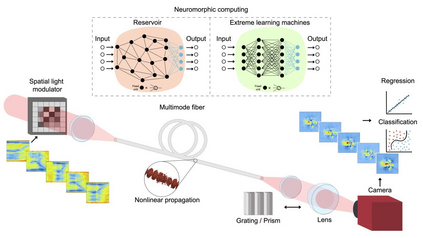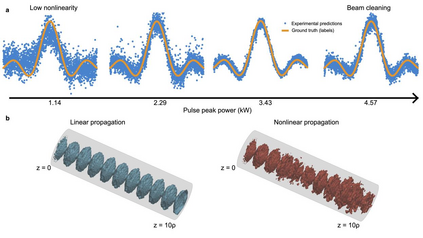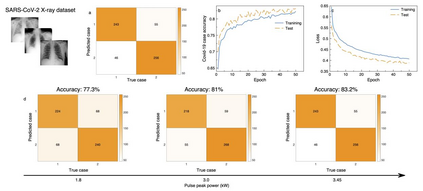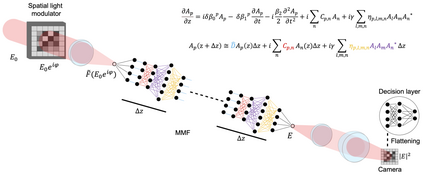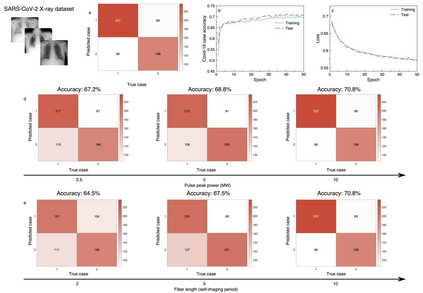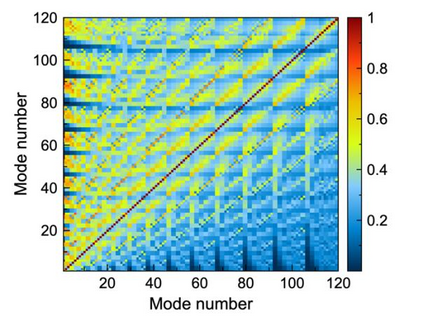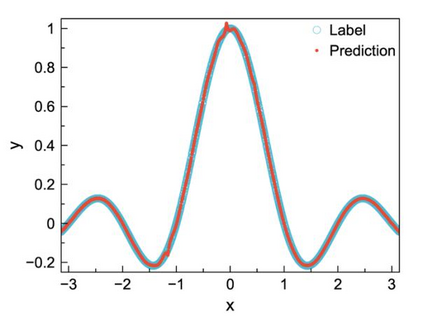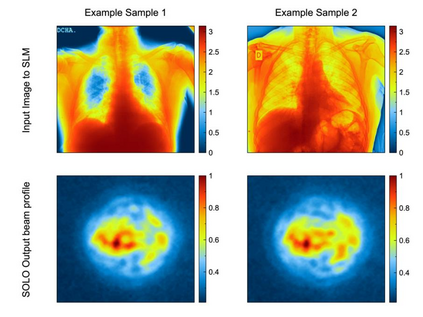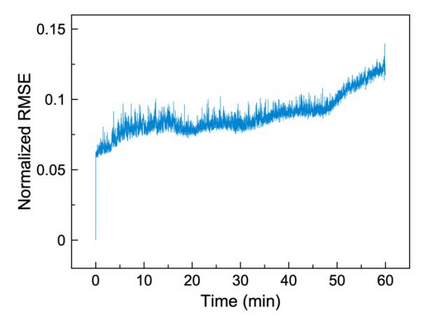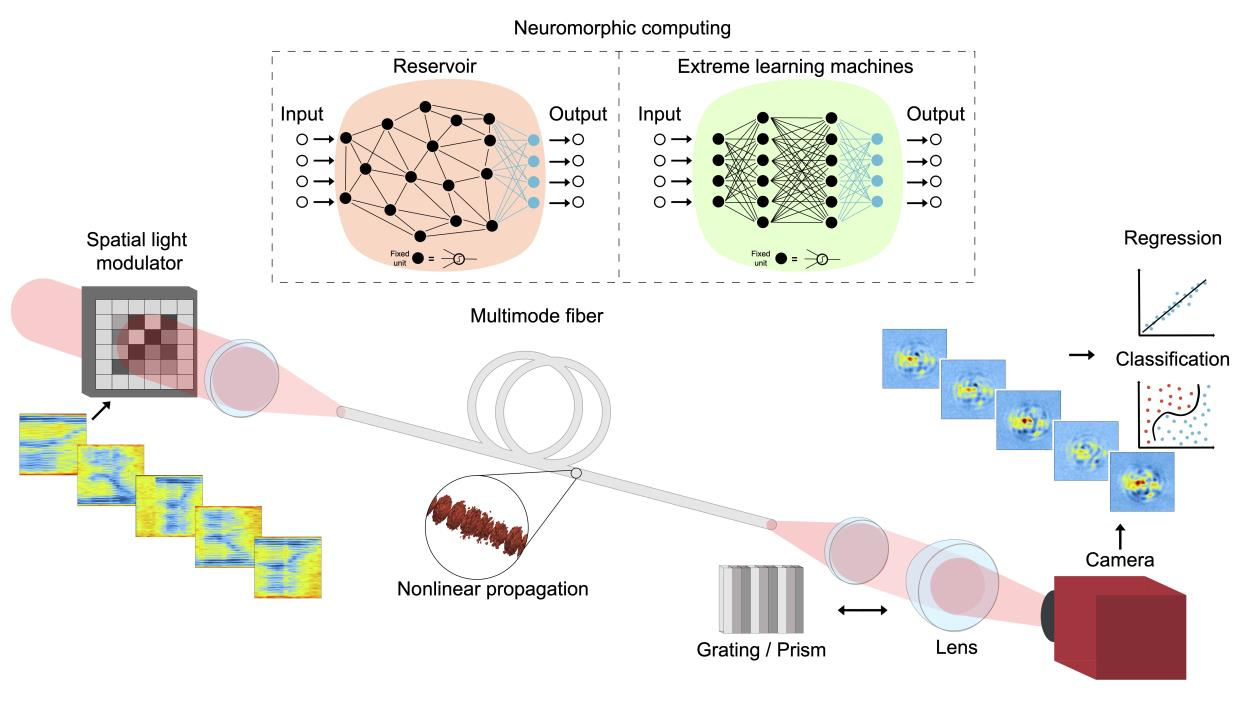Today's heavy machine learning tasks are fueled by large datasets. Computing is performed with power hungry processors whose performance is ultimately limited by the data transfer to and from memory. Optics is one of the powerful means of communicating and processing information and there is intense current interest in optical information processing for realizing high-speed computations. Here we present and experimentally demonstrate an optical computing framework based on spatiotemporal effects in multimode fibers for a range of learning tasks from classifying COVID-19 X-ray lung images and speech recognition to predicting age from face images. The presented framework overcomes the energy scaling problem of existing systems without compromising speed. We leveraged simultaneous, linear, and nonlinear interaction of spatial modes as a computation engine. We numerically and experimentally showed the ability of the method to execute several different tasks with accuracy comparable to a digital implementation.
翻译:今天的重机学习任务由大型数据集来推动。 计算机是用能量饥饿的处理器进行,其性能最终受到向内存和从内存传输数据的限制。 光学是通信和处理信息的有力手段之一,当前对光学信息处理有着浓厚的兴趣,以便实现高速计算。 在这里,我们提出并实验性地展示了基于多模式纤维的时空效应的光学计算框架,用于从对COVID-19 X射线肺图像进行分类和语音识别到从脸部图像预测年龄等一系列学习任务。 所提出的框架克服了现有系统的能源规模问题,但不会降低速度。 我们利用空间模式的同步、线性和非线性互动作为计算引擎。 我们用数字和实验性的方式展示了执行与数字执行相近的几种不同任务的能力。

